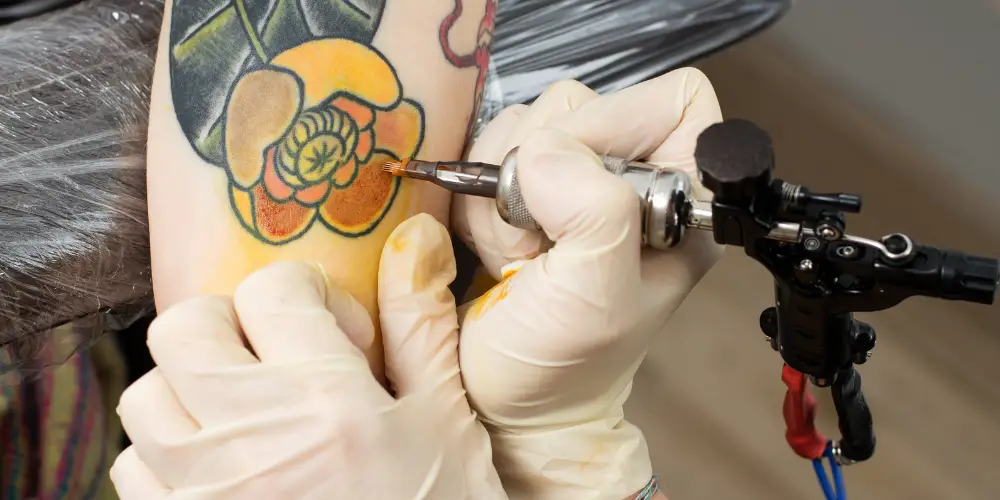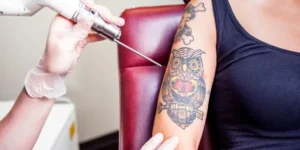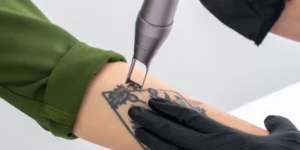Introduction
In the vibrant world of tattoos, colors breathe life into diverse designs, transforming simple ink into meaningful art. However, when it comes to tattoo removal, these very colors pose unique challenges, making the process complex and multifaceted. The efficacy of tattoo removal, particularly when dealing with colored tattoos, is influenced by various factors, including the type of ink used, the color spectrum, and the technology employed in removal. This article delves into the intricacies of removing colored tattoos and explores why color truly does matter in this context.
The Science Behind Tattoo Removal
To comprehend the challenges of removing colored tattoos, it’s pivotal to understand the science behind tattoo removal. Laser tattoo removal is the predominant method, utilizing laser technology to break down ink particles within the skin. The laser’s energy is absorbed by the tattoo ink, causing it to shatter into smaller particles, which are then eliminated by the body’s immune system.

Different colors of ink absorb different wavelengths of light, which is where the challenge with colored tattoos arises. Black ink, being the easiest to remove, absorbs all laser wavelengths. In contrast, colored inks are selective in the wavelengths they absorb, necessitating the use of different types of lasers or varied settings to effectively target each color.
The Spectrum of Difficulty in Colored Tattoo Removal
- Black and Dark Greens/Blues: Generally, black, dark green, and blue inks are the easiest to remove due to their ability to absorb all laser wavelengths effectively.
- Reds and Oranges: Reds and oranges can also be targeted effectively with specific laser wavelengths, although they may require more sessions compared to black ink.
- Light Colors: Light colors, such as yellow, pink, and white, are notoriously difficult to remove. They absorb less laser energy and often necessitate specialized lasers.
- Pastels and Fluorescents: Pastel colors and fluorescents often contain highly reflective pigments, which deflect laser energy, making them challenging to remove.
The Role of Technology: Q-Switched Lasers and Picosecond Lasers
Advancements in technology have enhanced the efficacy of colored tattoo removal. Q-switched lasers and picosecond lasers are at the forefront of these advancements:
-
- Q-Switched Lasers: These lasers emit light in short, rapid pulses, effectively shattering ink particles. Different types of Q-switched lasers, such as Nd:YAG and Ruby lasers, are utilized to target specific ink colors.
- Picosecond Lasers: Picosecond lasers emit light in even shorter pulses compared to Q-switched lasers, offering enhanced precision and efficacy in breaking down ink particles, particularly in the case of challenging colors.

Factors Influencing the Removal of Colored Tattoos
- Ink Depth and Density: The depth and density of the ink impact the number of sessions required for effective removal.
- Tattoo Age: Older tattoos tend to fade over time, potentially making them slightly easier to remove compared to newer ones.
- Skin Tone: Individuals with darker skin tones may experience slower progress due to the necessity of using lower laser energy to prevent skin pigmentation changes.
- Ink Quality: High-quality professional inks may be more challenging to remove compared to lower-quality inks.
- Location on the Body: Tattoos located further from the heart, such as on the hands and feet, may require more sessions due to reduced circulation in these areas.

Post-Treatment Care and Managing Expectations
Post-treatment care is crucial in optimizing results and minimizing potential side effects, such as scarring and hyperpigmentation. Adhering to aftercare instructions, such as keeping the area clean and protected, avoiding sun exposure, and refraining from irritating the treated area, is imperative.
Moreover, managing expectations is vital. Complete removal of colored tattoos may not always be possible, and the process often requires multiple sessions, spanning over several months or even years. Open communication with the specialist regarding anticipated outcomes, potential risks, and the estimated number of sessions is essential in navigating the journey of tattoo removal.
Conclusion
The realm of colored tattoo removal intertwines art, science, and technology, presenting unique challenges that demand specialized expertise and advanced technological interventions. While the journey of removing colored tattoos can be intricate and prolonged, advancements in laser technology have paved the way for enhanced efficacy and improved outcomes. By understanding the complexities involved, adhering to post-treatment care, and maintaining realistic expectations, individuals can navigate the path of tattoo removal with informed confidence and clarity.




